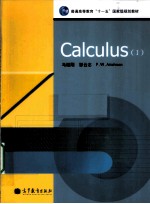图书介绍
微积分 1 英文版PDF|Epub|txt|kindle电子书版本网盘下载

- 马继刚,邹云志,(加)P. W. Aitchison 著
- 出版社: 北京:高等教育出版社
- ISBN:9787040292084
- 出版时间:2010
- 标注页数:228页
- 文件大小:29MB
- 文件页数:238页
- 主题词:微积分-双语教学-高等学校-教材-英文
PDF下载
下载说明
微积分 1 英文版PDF格式电子书版下载
下载的文件为RAR压缩包。需要使用解压软件进行解压得到PDF格式图书。建议使用BT下载工具Free Download Manager进行下载,简称FDM(免费,没有广告,支持多平台)。本站资源全部打包为BT种子。所以需要使用专业的BT下载软件进行下载。如BitComet qBittorrent uTorrent等BT下载工具。迅雷目前由于本站不是热门资源。不推荐使用!后期资源热门了。安装了迅雷也可以迅雷进行下载!
(文件页数 要大于 标注页数,上中下等多册电子书除外)
注意:本站所有压缩包均有解压码: 点击下载压缩包解压工具
图书目录
CHAPTER 1 Functions,Limits and Continuity1
1.1 Mathematical Sign Language1
1.1.1 Sets2
1.1.2 Numbers3
1.1.3 Intervals4
1.1.4 Implication and Equivalence5
1.1.5 Inequalities and Numbers6
1.1.6 Absolute Value of a Number7
1.1.7 Summation Notation9
1.1.8 Factorial Notation10
1.1.9 Binomial Coefficients10
1.2 Functions13
1.2.1 Definition of a Function13
1.2.2 Properties of Functions18
1.2.3 Inverse and Composite Functions21
1.2.4 Combining Functions26
1.2.5 Elementary Functions26
1.3 Limits27
1.3.1 The Limit of a Sequence27
1.3.2 The Limits of a Function30
1.3.3 One-sided Limits33
1.3.4 Limits Involving the Infinity Symbol35
1.3.5 Properties of Limits of Functions36
1.3.6 Calculating Limits Using Limit Laws37
1.3.7 Two Important Limit Results41
1.3.8 Asymptotic Functions and Small o Notation46
1.4 Continuous and Discontinuous Functions49
1.4.1 Definitions49
1.4.2 Building Continuous Functions52
1.4.3 Theorems on Continuous Functions55
1.5 Further Results on Limits58
1.5.1 The Precise Definition of a Limit58
1.5.2 Limits at Infinity and Infinite Limits61
1.5.3 Real Numbers and Limits64
1.5.4 Asymptotes65
1.5.5 Uniform Continuity68
1.6 Additional Material69
1.6.1 Cauchy69
1.6.2 Heine70
1.6.3 Weierstrass70
1.7 Exercises71
1.7.1 Evaluating Limits71
1.7.2 Continuous Functions73
1.7.3 Questions to Guide Your Revision74
CHAPTER 2 Differential Calculus75
2.1 The Derivative75
2.1.1 The Tangent to a Curve75
2.1.2 Instantaneous Velocity76
2.1.3 The Definition of a Derivative77
2.1.4 Notations for the Derivative80
2.1.5 The Derivative as a Function80
2.1.6 One-sided Derivatives83
2.1.7 Continuity of Differentiable Functions83
2.1.8 Functions with no Derivative84
2.2 Finding the Derivatives86
2.2.1 Derivative Laws86
2.2.2 Derivative of an Inverse Function89
2.2.3 Differentiating a Composite Function—The Chain Rule91
2.3 Derivatives of Higher Orders93
2.4 Implicit Differentiation96
2.4.1 Implicitly Defined Functions96
2.4.2 Finding the Derivative of an Implicitly Defined Function97
2.4.3 Logarithmic Differentiation100
2.4.4 Functions Defined by Parametric Equations100
2.5 Related Rates of Change102
2.6 The Tangent Line Approximation and the Differential104
2.7 Additional Material107
2.7.1 Preliminary result needed to prove the Chain Rule107
2.7.2 Proof of the Chain Rule108
2.7.3 Leibnitz109
2.7.4 Newton109
2.8 Exercises110
2.8.1 Finding Derivatives110
2.8.2 Differentials112
2.8.3 Questions to Guide Your Revision113
CHAPTER 3 The Mean Value Theorem and Applications of the Derivative114
3.1 The Mean Value Theorem114
3.2 L'Hospital's Rule and Indeterminate Forms122
3.2.1 The Indeterminate Forms 0/0,∞/∞,∞-∞ and ∞·0122
3.2.2 The Indeterminate Forms 00,∞0, 0∞ and 1∞126
3.3 Taylor Series128
3.4 Monotonic and Concave Functions and Graphs131
3.4.1 Monotonic Functions131
3.4.2 Concave Functions133
3.5 Maximum and Minimum Values of Functions137
3.5.1 Global Maximum and Global Minimum143
3.5.2 Curve Sketching145
3.6 Solving Equations Numerically149
3.6.1 Decimal Search149
3.6.2 Newton's Method151
3.7 Additional Material53
3.7.1 Fermat153
3.7.2 L'Hospital154
3.8 Exercises155
3.8.1 The Mean Value Theorem155
3.8.2 L'Hospital's Rules156
3.8.3 Taylor's Theorem156
3.8.4 Applications of the Derivative156
3.8.5 Questions to Guide Your Revision157
CHAPTER 4 Integral Calculus158
4.1 The Indefinite Integral159
4.1.1 Definitions and Properties of Indefinite Integrals159
4.1.2 Basic Antiderivatives161
4.1.3 Properties of Indefinite Integrals163
4.1.4 Integration By Substitution165
4.1.5 Further Results Using Integration by Substitution169
4.1.6 Integration by Parts172
4.1.7 Partial Fractions in Integration175
4.1.8 Rationalizing Substitutions182
4.2 Definite Integrals and the Fundamental Theorem of Calculus183
4.2.1 Introduction183
4.2.2 The Definite Integral184
4.2.3 Interpreting ∫b a f(x) dx as an Area187
4.2.4 Interpreting ∫b a f(t) dt as a Distance190
4.2.5 Properties of the Definite Integral191
4.2.6 The Fundamental Theorem of Calculus192
4.2.7 Integration by Substitution197
4.2.8 Integration by Parts199
4.2.9 Numerical Integration200
4.2.10 Improper Integrals204
4.3 Applications of the Definite Integral208
4.3.1 The Area of the Region Between Two Curves208
4.3.2 Volumes of Solids of Revolution211
4.3.3 Arc Length213
4.4 Additional Material215
4.4.1 Riemann216
4.4.2 Lagrange216
4.5 Exercises217
4.5.1 Indefinite Integrals217
4.5.2 Definite Integrals219
4.5.3 Questions to Guide Your Revision220
Answers221
Reference Books227